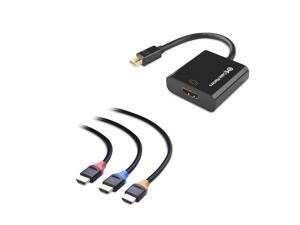

"What should I do next to make my Dell display work?" Apple sells an adapter to HDMI because there is no adapter needed to get DP video out. "There is no USB-C to DisplayPort in Apple site, maybe MBP 2017 cannot output to DisplayPort?"ĭisplayPort is the only thing it can output. It's likely you have a passive adapter or an active adapter plugged in backwards. Active adapters only work one way, as in if it's made to adapt DP to HDMI then it cannot adapt HDMI to DP. These are called DP++ ports and will have a DP++ symbol to mark them. Most DP to HDMI adapters are passive, meaning they require a DP output with backward compatibility to HDMI and DVI to work. I followed the link given to the display specs and I see it has DVI-D, connecting DVI-D to HDMI takes only a cheap passive cable to work and does not require any protocol conversion. "I bought an USB-C Digital AV Multiport Adapter but did not notice that Dell2214H only has DisplayPort."

One of the issues with Thunderbolt 3 is that despite supporting a seemingly huge 40 Gbps throughput, when you have dual display outputs as TB3 does, even DisplayPort 1.2 interfaces when doubled up can consume up to 32 Gbps in a 2x 4K 60 Hz setup - and that's before considering the bandwidth required to run any USB 3.1 Gen 2 and PCI Express devices you may have attached.I know this has been a while but I thought I'd respond if others happen upon this like I have. Hazards of being on the cutting edge!Īll that said, I suspect you're right that DP 1.4 support only applies to the MiniDP output on the system itself. In theory, any adapter that supports HDMI 2.0 should be able to pass 4K 60 Hz with HDR, but for an active adapter, there may some limitation on the adapter's DisplayPort input side that might make that a problem, and I'm not sure whether DisplayPort 1.4 can fall back to HDMI 2.0 with HDR natively in order to support a passive adapter. DisplayPort 1.4 actually DOES support HDR, but if you need an HDMI adapter, that could become an issue. I thought you just looked at the specs of the GPU from NVIDIA's site.

If the system ITSELF is advertised as supporting DisplayPort 1.4, then yes it's a good bet that it does.

The DP and MiniDP outputs each support 4K 60 Hz and you can run both of them at that resolution simultaneously, so you might be able to buy a DP to HDMI and a MiniDP to HDMI adapter to connect your HDMI 2.0 devices to that dock via those ports (and the dock does NOT require active adapters on its DisplayPort outputs) but I haven't tested that. Lastly, there's also the TB16 dock, but reading over the manual, its HDMI output is limited to 4K 30 Hz, so it's probably 1.4. Dell has dragged their feet on Thunderbolt firmware updates for some systems, so this is a potential pitfall. To check this on your system, open Thunderbolt Software, right-click the tray icon, click Settings, then click Details. Be aware however that those adapters typically require your Thunderbolt firmware to be at least NVM18. Most DP to HDMI adapters on the market are passive, relying on the host to fall back to native HDMI signaling on its DisplayPort output, but Thunderbolt 3 can't do that, and I don't believe any of the TB3 to Dual DP adapters on the market do either. The "active" part means that the adapter itself can convert a DisplayPort signal to HDMI internally. If you need two 4K 60 Hz displays simultaneously, you would need a Thunderbolt 3 to Dual DisplayPort adapter and then a pair of active DisplayPort to HDMI adapters that support 4K 60 Hz.
ACTIVE THUNDERBOLT TO HDMI ADAPTER FULL
not being required to carry USB traffic at the same time, as it would be with a dock) has the bandwidth of a full DisplayPort 1.2 output, which is enough bandwidth for 4K 60 Hz. USB Type-C when used exclusively for video (i.e.
ACTIVE THUNDERBOLT TO HDMI ADAPTER DRIVERS
If you need HDR, that is NOT at the moment no laptop on the market that I'm aware of supports HDR at this time, although it's also such a problem with Windows and GPU drivers right now that it's hardly worth it, but that's another story.īut if you only need 4K 60 Hz and only from a single display, the simplest way to achieve that is with a USB-C (not Thunderbolt 3) to HDMI 2.0 adapter. In terms of HDMI 2.0, it depends on what you're trying to do there. Second, Thunderbolt 3 to the best of my knowledge only carries DisplayPort 1.2, even if the GPU supports DisplayPort 1.4, and it also only carries DisplayPort it will not natively output HDMI, DVI, or VGA. There are GPUs in PCs that support far more displays than the system does because the OEM chose not to wire as many display outputs as possible to the GPU, for example. First, be aware that just because a GPU supports something, it does not mean that it was implemented in the rest of the system.


 0 kommentar(er)
0 kommentar(er)
